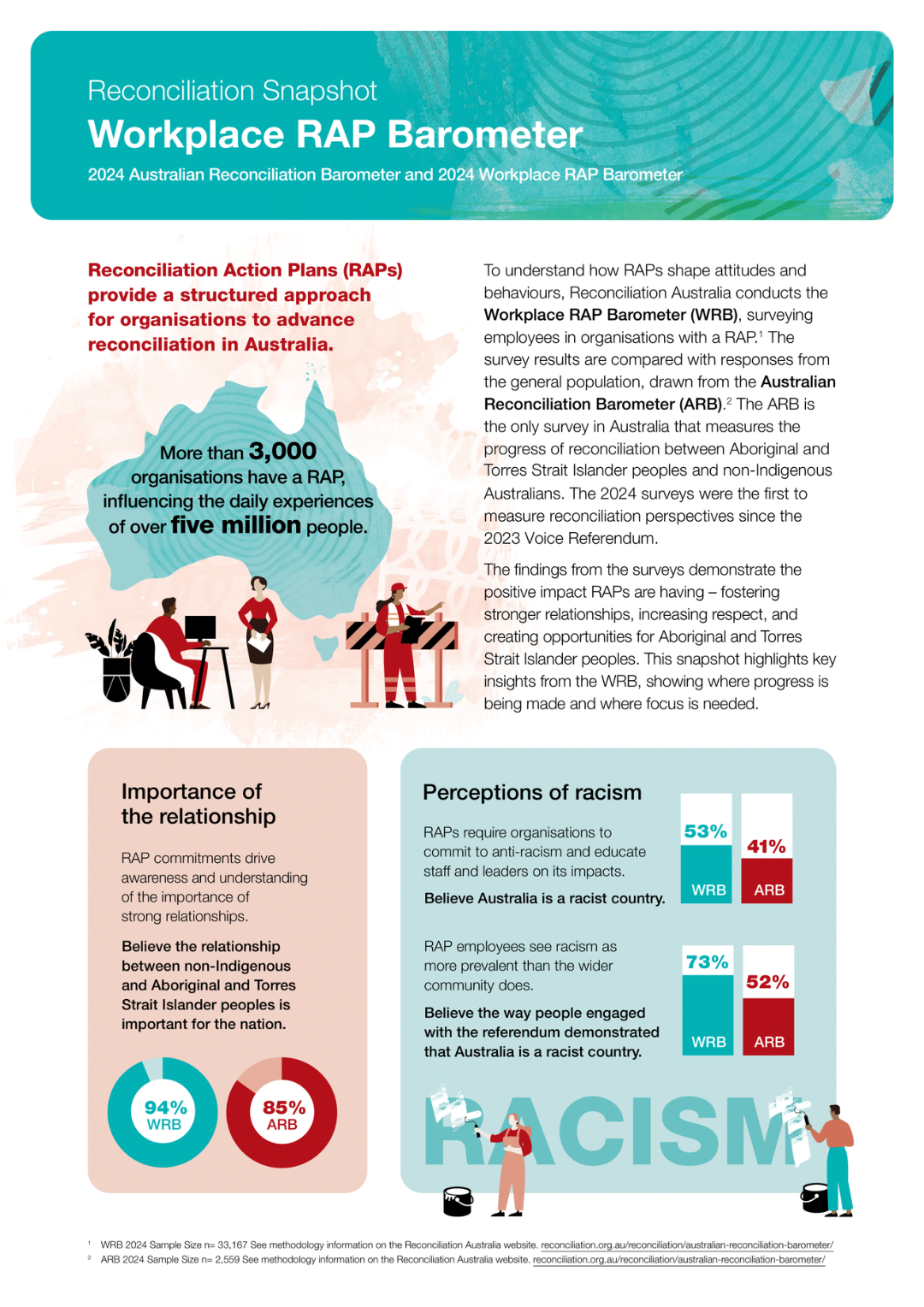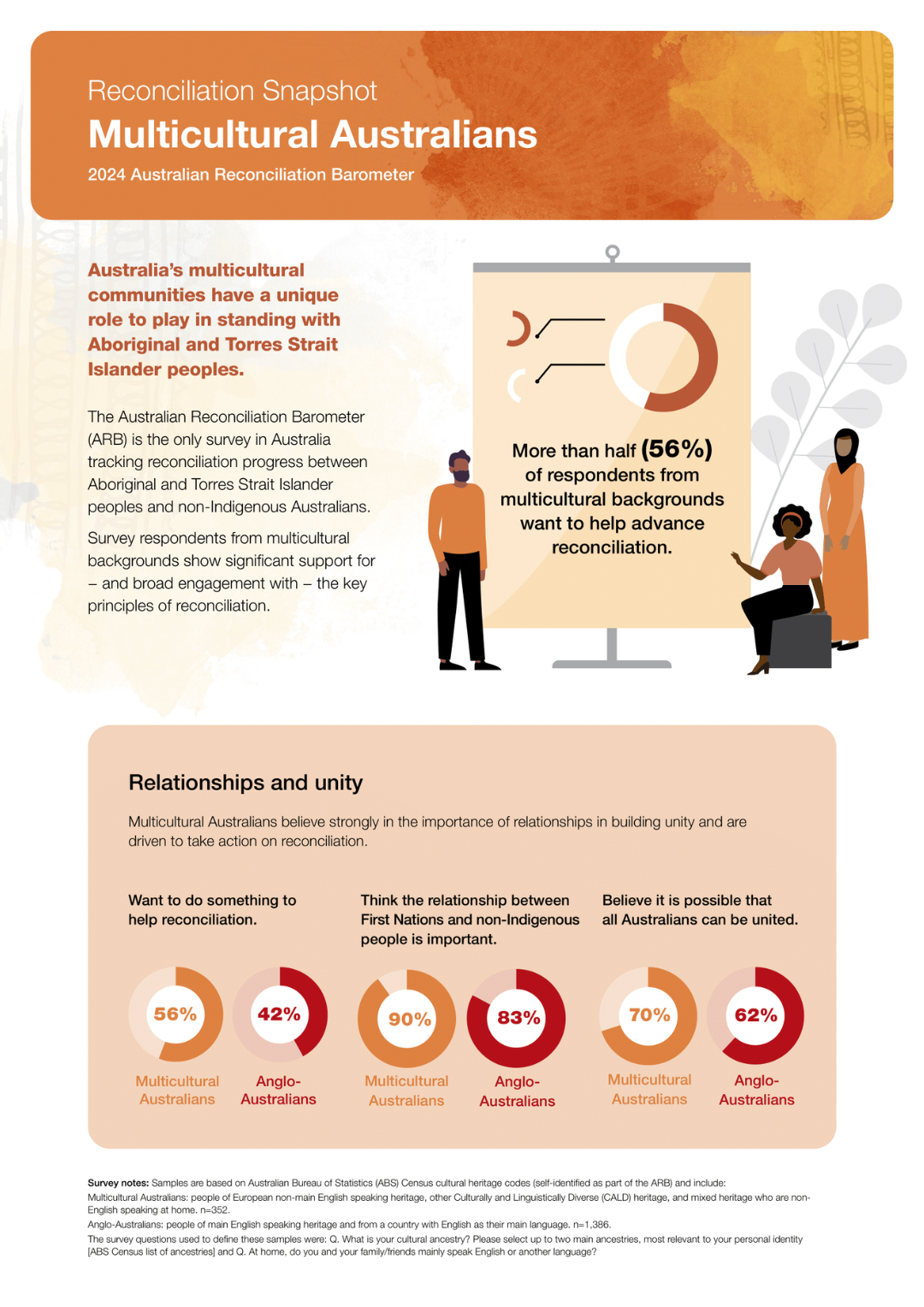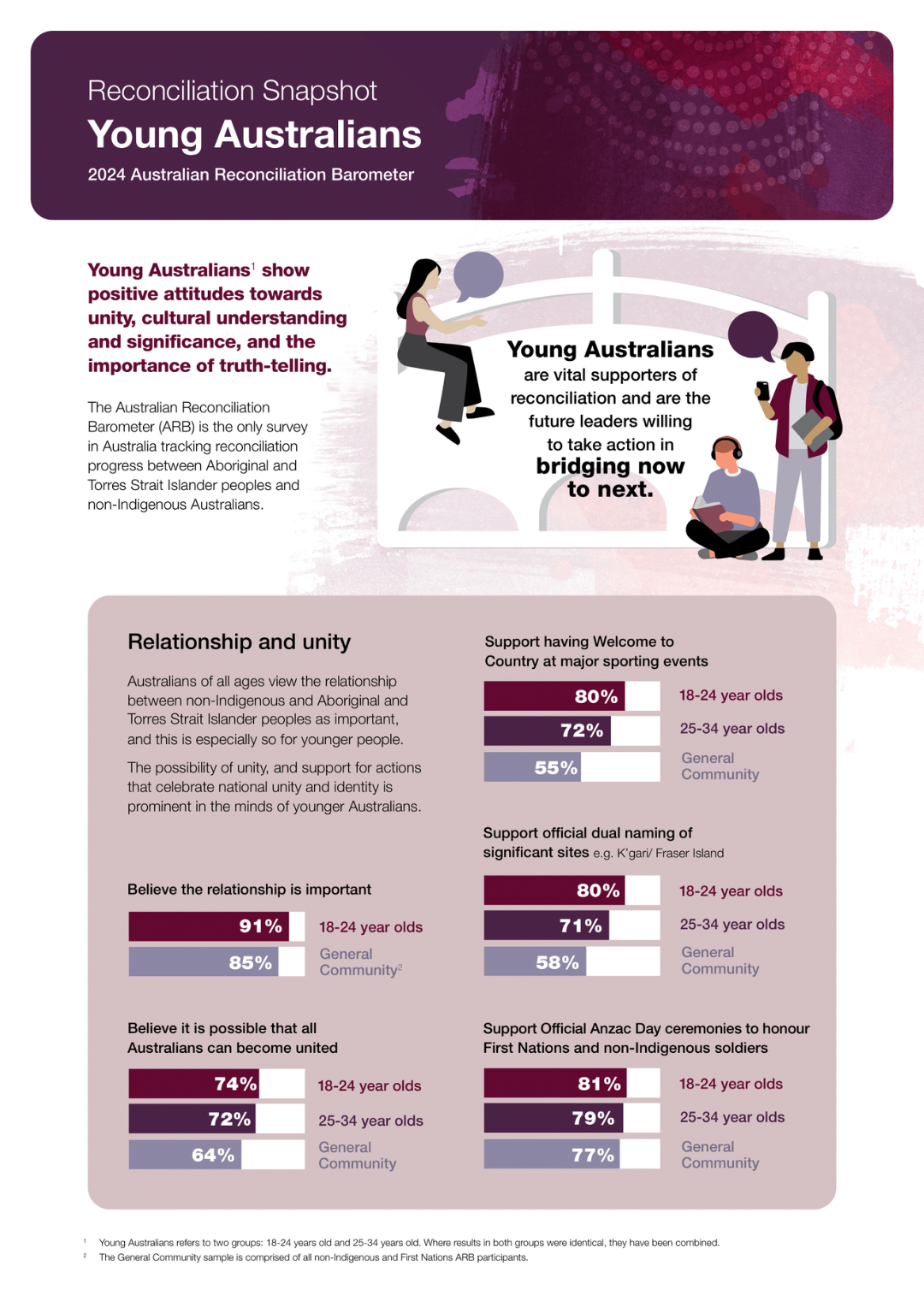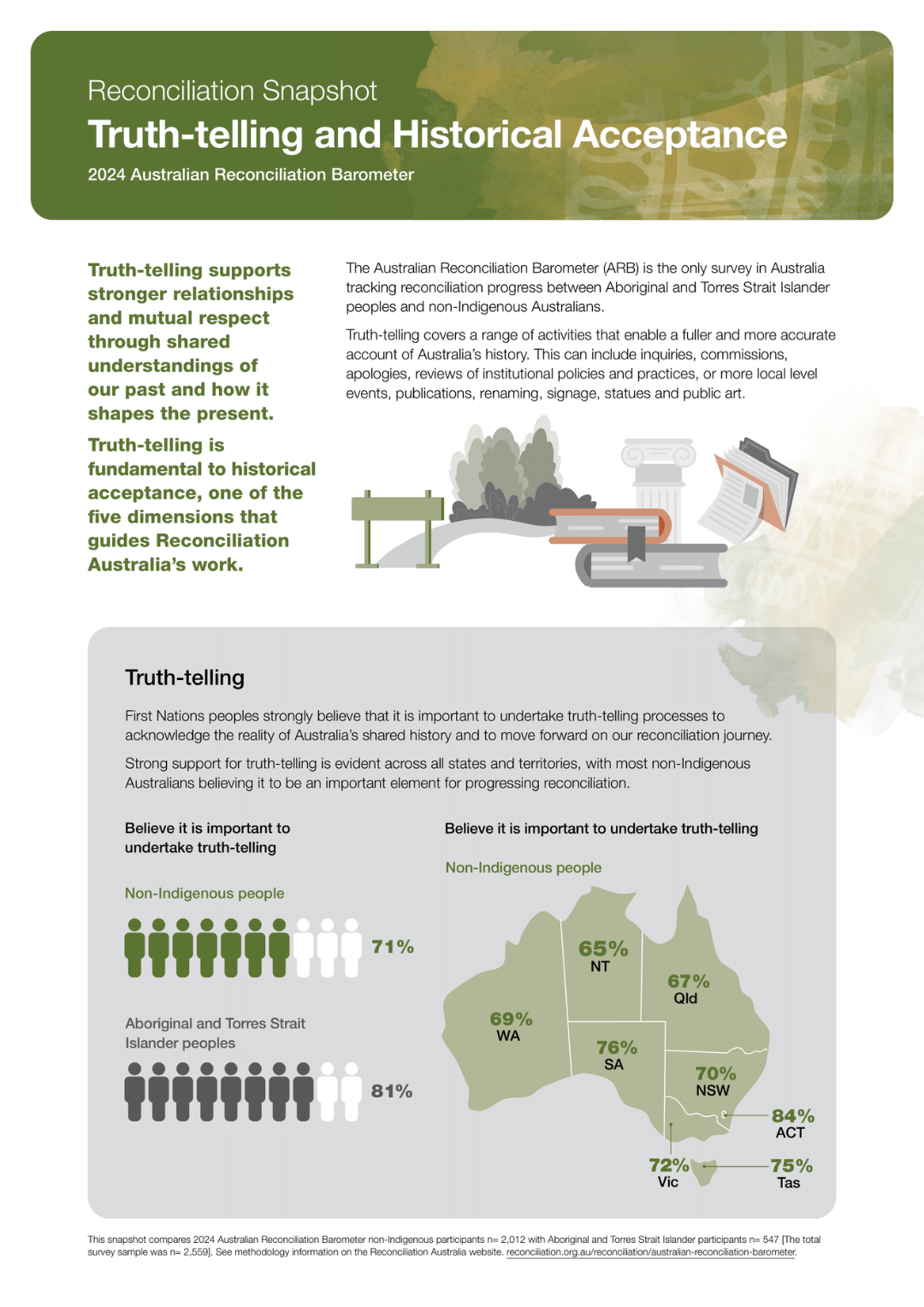The Australian Reconciliation Barometer (ARB) is a national research study, undertaken every two years since 2008. It is the only survey in Australia that measures the progress of reconciliation between Aboriginal and Torres Strait Islander people and non-Indigenous Australians.
It measures attitudes towards reconciliation, using the five dimensions of reconciliation – race relations, equality and equity, unity, institutional integrity, and historical acceptance – to inform data collection and analysis.
The 2024 Barometer data has been released as a series of snapshots.
Together, the snapshots provide a point-in-time understanding of the attitudes and behaviours among different groups of people to paint a clear picture of Australia’s reconciliation journey.
Reconciliation Snapshots
Workplace RAP Barometer
The 2024 Australian Reconciliation Barometer (ARB) and the 2024 Workplace RAP Barometer (WRB) comparison snapshot shows the positive impact RAPs (Reconciliation Action Plans) continue to have on RAP employees’ perceptions of and attitudes towards reconciliation.
Multicultural Australians
The 2024 ARB shows that multicultural Australians believe more strongly in the importance of relationships in building unity than mainstream Australians and are more driven to take action on reconciliation.
Young Australians
Young Australians aged 18 – 34 years old have more positive attitudes towards unity, cultural understanding and the importance of truth-telling than older Australians. They are the future leaders willing to take action in advancing reconciliation.
Racism and First Nations Peoples
More than half of Aboriginal and Torres Strait Islander peoples surveyed as part of the 2024 ARB reported experiencing racial discrimination in the past six months. Not only have these experiences increased, but there has been a significant increase in racism over the last decade.
Truth-telling and Historical Acceptance
Most non-Indigenous Australians recognise the importance of truth-telling in advancing reconciliation but only some are participating in truth-telling opportunities. Younger non-Indigenous Australians show greater participation compared with the broader non-Indigenous community.
2024 Survey notes
- 547 Aboriginal and Torres Strait Islander people (associated with a margin of error of +/-4.2%)
- 2,012 non-Indigenous people (associated with a margin of error of +/-2.2%)
- The combined total base sample of 2,599 is associated with a margin of error of +/-1.9%
- Both samples weighted using Australian Bureau of Statistics (ABS) data in order to ascertain representative perspectives from First Nations and non-Indigenous voices.

